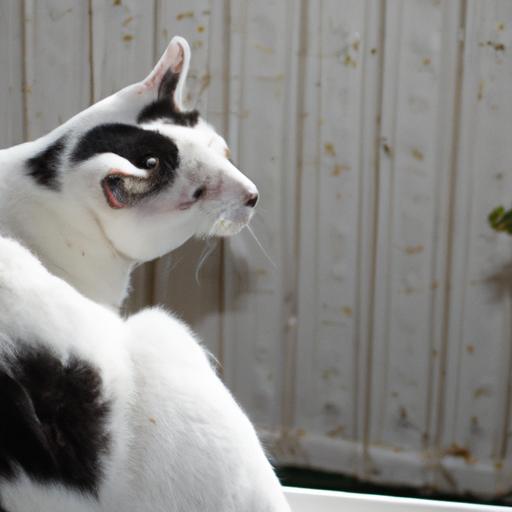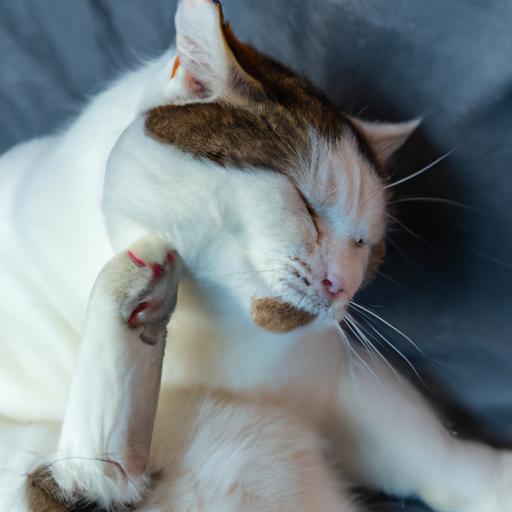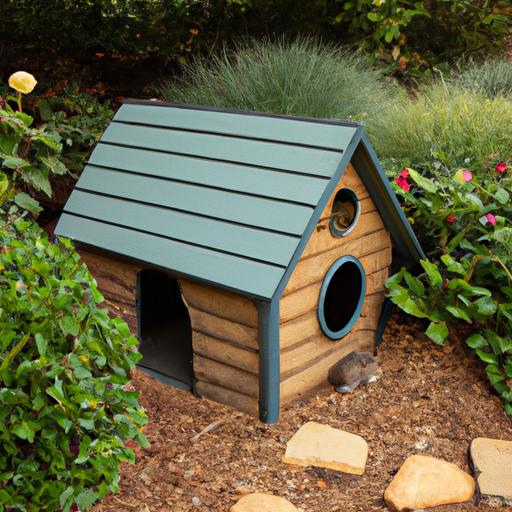When it comes to our feline companions, understanding the duration of their pregnancy is crucial. Whether you’re a concerned cat owner or a curious cat enthusiast, knowing how long cats are pregnant can help you ensure the well-being of the expectant mother and her adorable kittens. In this article, we will explore the importance of understanding feline pregnancy duration and delve into the key factors that influence the length of cat pregnancy.
A. Importance of Understanding Feline Pregnancy Duration
Have you ever wondered why it’s essential to know how long cats are pregnant? Well, just like humans, cats undergo a remarkable journey during pregnancy, and being aware of the duration allows us to provide the necessary care and support. Knowing the timeline helps us anticipate and prepare for the arrival of the kittens, ensuring a smooth and safe experience for both the mother and her offspring.
By understanding the typical duration of feline pregnancy, you can monitor your cat’s health more effectively. It enables you to recognize any potential complications or deviations from the norm, allowing for timely intervention if needed. Additionally, understanding the timeline allows you to plan for essential veterinary check-ups, vaccinations, and proper nutrition during each stage of your cat’s pregnancy.
B. Key Factors Influencing the Length of Cat Pregnancy
Now that we understand the importance of feline pregnancy duration, let’s explore the factors that can influence how long cats stay pregnant. While the average gestation period for cats ranges from 63 to 66 days, it’s important to note that individual variations can occur. Here are some key factors that can impact the length of cat pregnancy:
-
Breed Variations: Different cat breeds may have variations in their pregnancy duration. Some breeds may have slightly shorter or longer gestation periods compared to others.
-
Maternal Age and Health: A cat’s age and overall health can influence the length of her pregnancy. Younger cats or those with pre-existing health conditions may experience variations in their pregnancy duration.
-
Number of Kittens: The number of kittens the mother cat is carrying can affect the length of her pregnancy. Larger litters may result in a slightly shorter gestation period, while smaller litters may extend the duration.
-
Environmental Factors: Environmental factors, such as stress levels and temperature, can influence the length of cat pregnancy. A calm and comfortable environment can contribute to a healthier and more regular pregnancy duration.
By understanding these key factors, you’ll be better equipped to assess the length of your cat’s pregnancy and provide the necessary care and support throughout this exciting journey.
In the next section, we will dive deeper into the average duration of cat pregnancy, shedding light on the typical timeline and the fascinating stages of feline gestation. So, let’s embark on this enlightening exploration together!
Understanding Feline Pregnancy
Cats are truly incredible beings, and their pregnancy journey is no exception. To provide the best care for your pregnant cat, it’s essential to have a solid understanding of what cat pregnancy entails. In this section, we will explore the definition of cat pregnancy, discuss the signs to look out for, and emphasize the importance of veterinary confirmation.
A. Definition of Cat Pregnancy
Cat pregnancy, also known as feline gestation, refers to the period when a female cat carries and nurtures her developing kittens in her womb. During this time, the mother cat undergoes significant physical and hormonal changes to support the growth and development of her offspring. Understanding the duration of cat pregnancy allows us to track these changes and provide appropriate care.
B. Signs of Pregnancy in Cats
So, how can you tell if your feline friend is expecting? While each cat may exhibit different signs, there are some common indicators of pregnancy to watch out for. These signs include:
-
Changes in Nipple Color and Size: Around 2-3 weeks into pregnancy, a pregnant cat’s nipples may become enlarged and develop a darker color.
-
Increased Appetite: As the pregnancy progresses, you may notice your cat’s appetite increasing. This is because her body requires additional nutrients to support the growing kittens.
-
Behavioral Changes: Pregnant cats may display behavioral changes such as increased affection, nesting behaviors, or seeking out secluded areas to create a birthing space.
-
Weight Gain: A pregnant cat will typically gain weight as her pregnancy progresses. This weight gain is a natural and healthy part of the process.
C. Importance of Veterinary Confirmation
While observing the signs mentioned above can provide initial indications of pregnancy, it is crucial to seek veterinary confirmation. A veterinarian can perform a thorough examination, including palpation or ultrasound, to confirm the presence of kittens and determine the stage of pregnancy. This confirmation allows for appropriate prenatal care and ensures that any potential health concerns are addressed.
Understanding the ins and outs of feline pregnancy is the foundation for providing the best care for your pregnant cat. In the next section, we will delve into the average duration of cat pregnancy, shedding light on the typical timeline and the various factors that can influence the length of pregnancy. Let’s continue our journey of discovery!
Stages of Cat Pregnancy
As we continue our journey into understanding feline pregnancy, let’s explore the fascinating stages that a pregnant cat goes through. Cat pregnancy, also known as feline gestation, is divided into three distinct trimesters, each with its own unique characteristics and important milestones.
A. First Trimester
The first trimester of cat pregnancy is an exciting time filled with subtle changes and adjustments. During this period, it’s crucial to pay close attention to your cat’s well-being and provide the necessary care. Here are two key aspects of the first trimester:
-
Early Signs and Physical Changes: In the early stages of pregnancy, you may notice some telltale signs that your cat is expecting. These signs can include behavioral changes, increased appetite, and slight weight gain. Additionally, you may observe physical changes such as swollen nipples and a softer abdomen.
-
Importance of Nutrition and Care: Proper nutrition and care during the first trimester are essential for supporting your cat’s health and the development of her kittens. Ensure that she has access to a well-balanced diet, rich in essential nutrients. Consult with your veterinarian to determine the appropriate diet and any necessary supplements.
B. Second Trimester
As your cat progresses into the second trimester, exciting developmental milestones occur within her growing kittens. This trimester is a crucial period for their growth and requires specific attention and care. Let’s explore two important aspects of the second trimester:
-
Developmental Milestones in Kittens: During the second trimester, the kittens’ organs, limbs, and fur begin to develop. They transform from tiny embryos into recognizable feline shapes. This is an exciting time as you may even be able to feel the kittens’ movements through gentle palpation.
-
Recommended Veterinary Check-ups: Regular veterinary check-ups are vital during the second trimester to ensure the well-being of both the mother and her kittens. These visits allow the veterinarian to monitor the progress of the pregnancy, identify any potential complications, and provide appropriate medical interventions if necessary.
C. Third Trimester
The final trimester of cat pregnancy is a period of anticipation and preparation for the upcoming birth. As the due date approaches, your cat will exhibit specific behaviors and physical changes. Let’s explore two key aspects of the third trimester:
-
Final Preparations for Birth: During the third trimester, your cat will start preparing for birth. She may become more restless, seeking out secluded areas to create a nest. It’s important to provide a safe and comfortable space for her, equipped with blankets or towels for nesting.
-
Nesting Behaviors and Signs of Imminent Labor: As labor nears, your cat’s nesting behaviors will become more pronounced. She may exhibit restlessness, excessive grooming, and vocalizations. Keep a close eye for signs of imminent labor, such as contractions and the appearance of a vaginal discharge. If you notice any concerns or abnormalities, seek veterinary assistance promptly.
Understanding the stages of cat pregnancy allows you to provide appropriate care and support throughout each phase. In the next section, we will explore the essential aspects of preparing and caring for a pregnant cat. So, let’s continue our journey and ensure a healthy and happy pregnancy for your feline friend!
Care and Preparation for Pregnant Cats
As a responsible cat owner, ensuring the well-being of your pregnant cat is of utmost importance. Proper care and preparation during this crucial time can contribute to a healthy pregnancy and the birth of strong, thriving kittens. In this section, we will discuss essential aspects of caring for and preparing a pregnant cat.
A. Proper Nutrition during Pregnancy
Just like humans, pregnant cats have unique nutritional requirements to support the growth and development of their kittens. Providing a well-balanced diet is essential during this time. Here are some key considerations when it comes to nutrition for pregnant cats:
-
Nutritional Requirements for Pregnant Cats: Pregnant cats require a diet that is rich in high-quality protein, essential fatty acids, vitamins, and minerals. Consult with your veterinarian to ensure your cat’s diet meets these requirements.
-
Recommended Diet and Feeding Schedule: It’s important to feed your pregnant cat high-quality commercial cat food specifically formulated for pregnant or nursing cats. These foods provide the necessary nutrients in appropriate quantities. Your veterinarian can guide you on the recommended feeding schedule based on your cat’s individual needs.
B. Exercise and Mental Stimulation for Pregnant Cats
While pregnant cats may require some extra rest, it’s essential to provide them with appropriate exercise and mental stimulation. Moderate physical activity helps maintain muscle tone and overall health. Engaging your cat in gentle play sessions or providing interactive toys can keep her mentally stimulated and prevent boredom.
C. Creating a Safe and Comfortable Environment for Nesting
As your pregnant cat nears her due date, it’s crucial to create a safe and comfortable environment for her to give birth and care for her kittens. Here are some tips to prepare a nesting area:
-
Choose a Quiet and Secluded Space: Find a quiet corner or a separate room where your cat can feel secure and undisturbed during labor and nursing.
-
Provide a Comfortable Bed: Ensure your cat has a cozy, clean, and warm bed where she can comfortably give birth and nurse her kittens. Soft blankets or bedding specifically designed for this purpose can provide the necessary comfort.
-
Ensure Proper Hygiene: Regularly clean the nesting area to maintain a clean and hygienic environment for the mother and her kittens. This helps prevent the risk of infections.
By following these care guidelines and creating a nurturing environment, you can help your pregnant cat have a stress-free and comfortable experience, ensuring the health and well-being of both mother and kittens.
In the next section, we will conclude our exploration with a recap of the key points discussed and emphasize the importance of monitoring a pregnant cat’s health. So, let’s move forward to the conclusion!
Conclusion
In conclusion, understanding the duration of feline pregnancy is crucial for cat owners and enthusiasts alike. By knowing how long cats are pregnant, we can provide the necessary care and support for the expectant mother and her kittens. The timeline allows us to monitor the cat’s health, plan for veterinary check-ups, and ensure proper nutrition throughout each stage of pregnancy.
Throughout this article, we’ve explored the importance of understanding feline pregnancy duration and the key factors that influence its length. By being aware of breed variations, the impact of maternal age and health, the number of kittens, and environmental factors, we can better understand and anticipate the duration of cat pregnancy.
Remember, if you have a pregnant cat, it’s essential to consult with a veterinarian for confirmation and guidance. They can provide expert advice tailored to your cat’s specific needs, ensuring a smooth and safe pregnancy journey.
So, whether you’re eagerly awaiting the arrival of adorable kittens or simply fascinated by the wonders of feline reproduction, understanding how long cats are pregnant is a valuable piece of knowledge. Stay informed, provide the necessary care, and enjoy the magical journey of feline pregnancy.



